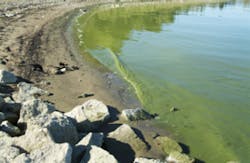USDA supports water quality in Lake Erie basin states
WASHINGTON — Ohio, Michigan and Indiana will receive a $5 million investment from the United States Department of Agriculture’s (USDA) Natural Resources Conservation Service (NRCS) to help improve quality in the western Lake Erie basin, according to a press release.
Nutrients from nearby farms have contributed to the growth of toxic algal blooms in the water, stated the release. The funds will help farmers reduce the amount of nutrients entering the watershed.
“USDA is committed to helping farmers do their part to protect and improve water quality in Lake Erie, and this targeted funding will allow for solutions to be expanded and delivered more quickly,” USDA Secretary Tom Vilsack said in the release. “A problem as complex as this one will demand wide attention, from agriculture to municipalities, and we will continue to work with the Western Lake Erie Basin Partnership and other partners across the region to find common ground to address water quality issues in the basin.”
The funding is through the Farm Bill’s Environmental Quality Incentives Program (EQIP), noted the release. Farmers will use the money to implement "conservation practices such as planting cover crops, adding gypsum to soil, implementing conservation tillage or no-till systems on crop fields, installing agricultural drainage water management systems and implementing nutrient management plans." Farmers usually contribute half the cost of applying these practices.
Farmers have reduced annual nutrient and sediment losses by about "7 million pounds of nitrogen, 1.2 million pounds of phosphorus and 488,000 tons of sediment in the Lake Erie Basin" with NRCS funds between 2009 and 2014, reported the release.
Click here to read the entire release.
